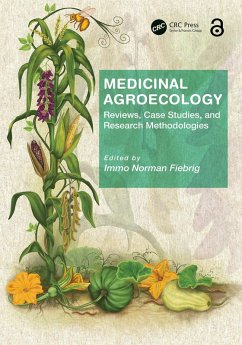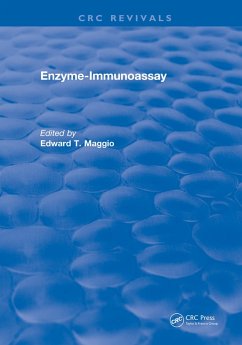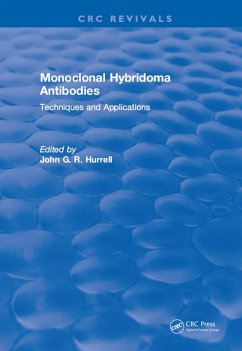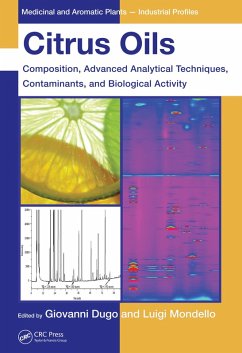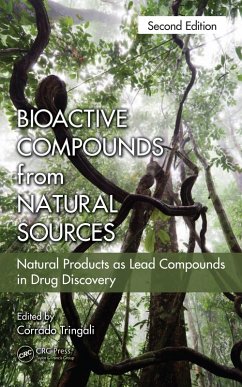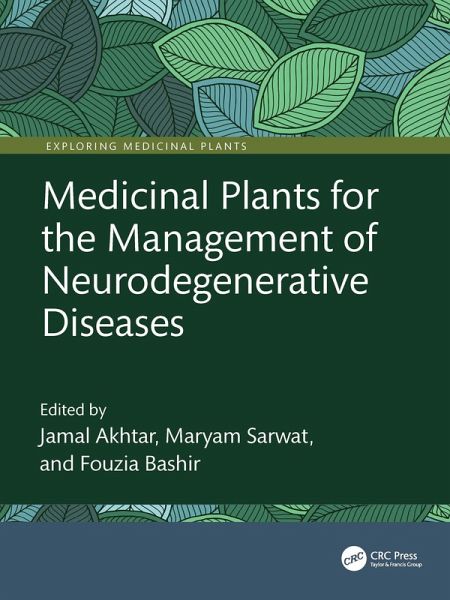
Medicinal Plants for the Management of Neurodegenerative Diseases (eBook, PDF)
Versandkostenfrei!
Sofort per Download lieferbar
52,95 €
inkl. MwSt.
Weitere Ausgaben:

PAYBACK Punkte
26 °P sammeln!
Ageing is the main reason for most neurodegenerative diseases, including Alzheimer's disease (AD) and Parkinson's disease (PD). About 10% of individuals aged =65 years develop AD, which continuously increases with growing age. Medicinal plants have been used for age-related neurodegenerative disorders for a long time. These plants are rich in terms of various phytochemical constituents such as flavonoids, sterols, alkaloids, saponins, and terpenoids. Different scientific studies have been carried out on these medicinal herbs, e.g., anti-inflammatory, antioxidant, and neuro-regenerative activit...
Ageing is the main reason for most neurodegenerative diseases, including Alzheimer's disease (AD) and Parkinson's disease (PD). About 10% of individuals aged =65 years develop AD, which continuously increases with growing age. Medicinal plants have been used for age-related neurodegenerative disorders for a long time. These plants are rich in terms of various phytochemical constituents such as flavonoids, sterols, alkaloids, saponins, and terpenoids. Different scientific studies have been carried out on these medicinal herbs, e.g., anti-inflammatory, antioxidant, and neuro-regenerative activities that may be used in the treatment of AD and other age-related diseases. These medicinal plants, e.g., Curcuma longa, Bacopa monniera, Glycyrrhiza glabra, Commiphora whighitti, and Acorus calamus L., have anti-inflammatory properties that may decrease swelling of the brain tissue in AD.
Despite this, there is currently no book available in the market that provides full information on the phytochemical and medicinal uses of the medicinal plants exclusively used for the management of neurodegenerative diseases in the elderly. This book aims to provide some important and evidence-based information on the plants used for neurodegenerative diseases in the elderly, especially AD and PD, in a planned manner so the academicians, researchers, and students working in the fields of medicinal plants, plant science, chemistry, biotechnology, pharmacognosy, pharmaceuticals, biochemistry, and many other interdisciplinary subjects may benefit. This book will also be useful in identifying a few medicinal plants and their prospects for the synthesis or preparation of new drugs for neurodegenerative diseases.
Features:
This book serve as comprehensive information about the description, phytochemistry, actions, and medicinal use of plants that are used in neurodegenerative diseases. In addition, this book will also ease the understanding and interaction of medicinal plants used in neurodegenerative diseases.
Despite this, there is currently no book available in the market that provides full information on the phytochemical and medicinal uses of the medicinal plants exclusively used for the management of neurodegenerative diseases in the elderly. This book aims to provide some important and evidence-based information on the plants used for neurodegenerative diseases in the elderly, especially AD and PD, in a planned manner so the academicians, researchers, and students working in the fields of medicinal plants, plant science, chemistry, biotechnology, pharmacognosy, pharmaceuticals, biochemistry, and many other interdisciplinary subjects may benefit. This book will also be useful in identifying a few medicinal plants and their prospects for the synthesis or preparation of new drugs for neurodegenerative diseases.
Features:
- An overview of the medicinal plants that can be helpful for neurodegenerative disorders
- Recent research results and some pointers for the management of neurodegenerative diseases
This book serve as comprehensive information about the description, phytochemistry, actions, and medicinal use of plants that are used in neurodegenerative diseases. In addition, this book will also ease the understanding and interaction of medicinal plants used in neurodegenerative diseases.
Dieser Download kann aus rechtlichen Gründen nur mit Rechnungsadresse in A, B, BG, CY, CZ, D, DK, EW, E, FIN, F, GR, HR, H, IRL, I, LT, L, LR, M, NL, PL, P, R, S, SLO, SK ausgeliefert werden.





